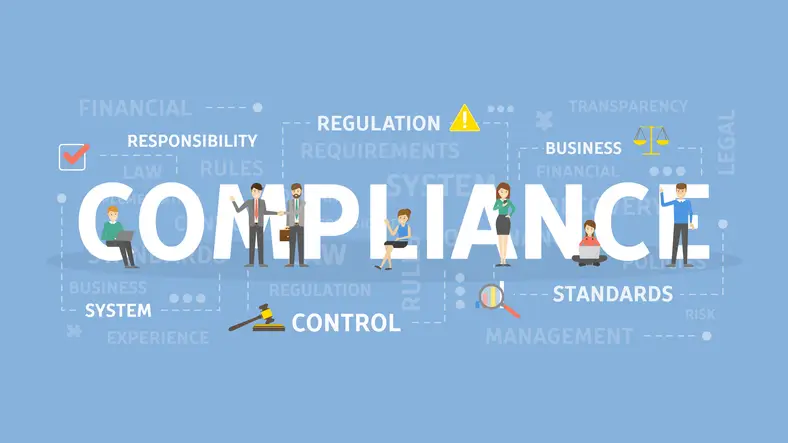Important Things to Know About EHS Compliance Training Online
Creating a safe and healthy work environment is a critical obligation for every organization. Environmental, Health, and Safety (EHS) compliance is essential in safeguarding employees, minimizing environmental impact, and ensuring businesses adhere to regulatory standards. With the increasing adoption of digital learning, online EHS compliance training has emerged as a flexible and efficient way for organizations to meet legal requirements while promoting a strong safety culture.
According to the Occupational Safety and Health Administration (OSHA), businesses that implement effective EHS programs can reduce workplace injuries by 40% or more. This article explores the fundamentals of EHS compliance, strategies for achieving it, and the importance of OSHA training.
What is Environment Health & Safety?
EHS refers to a broad framework of policies, regulations, and best practices aimed at ensuring workplace safety, reducing environmental impact, and promoting overall employee well-being. It encompasses:
- Environmental Protection: Addressing pollution control, waste management, and sustainability efforts to minimize negative impacts on the environment.
- Health Standards: Ensuring employees are not exposed to hazardous substances, ergonomic risks, or poor working conditions that may affect their well-being.
- Safety Regulations: Implementing workplace protocols to prevent injuries, accidents, and occupational hazards.
Adhering to EHS compliance standards is crucial for organizations to avoid legal penalties, reduce workplace incidents, and maintain a responsible corporate image. Key regulatory bodies, such as the Occupational Safety and Health Administration (OSHA) and the Environmental Protection Agency (EPA), set strict guidelines that businesses must follow to ensure safe operations.
Failing to comply with EHS regulations can result in severe consequences, including financial penalties, lawsuits, and reputational damage. Moreover, a strong EHS program improves operational efficiency, employee morale, and overall business sustainability.
How Can You Achieve EHS Compliance?
Achieving EHS compliance requires a proactive approach that integrates safety measures, employee training, and regulatory adherence. Here are key steps to ensure compliance:
1. Hazard Identification and Risk Assessment
The first step in EHS compliance is identifying potential hazards within the workplace. This includes:
- Conducting safety inspections to pinpoint risks.
- Analyzing past incidents and near-misses.
- Assessing the likelihood and severity of potential hazards.
2. Development of Safety Policies and Procedures
Once hazards are identified, companies must establish clear policies and procedures that align with industry regulations. This includes:
- Establishing standard operating procedures (SOPs) for hazardous tasks.
- Creating emergency response plans for fires, chemical spills, and other risks.
- Implementing policies for equipment handling and workplace ergonomics.
3. Employee Training and Education
Comprehensive training is essential for employees to understand EHS regulations and their role in workplace safety. Key aspects of EHS training include:
- OSHA compliance training: Covering workplace safety regulations and hazard recognition.
- First aid and emergency response training: Preparing employees to handle workplace emergencies.
- Environmental compliance training: Educating staff on waste disposal, pollution control, and sustainability.
4. Regular Inspections and Audits
EHS compliance is an ongoing process, requiring continuous evaluation and improvement. Organizations should:
- Conduct internal audits to assess adherence to safety standards.
- Perform regular site inspections to detect potential violations.
- Address any compliance gaps by updating policies and procedures.
5. Accurate Record-Keeping
Maintaining detailed records is a legal requirement for EHS compliance. Businesses must document:
- Employee training sessions and certifications.
- Workplace incidents, near-misses, and corrective actions.
- Inspection reports and regulatory filings.
Why OSHA Training Is A Part Of EHS Compliance
The Occupational Safety and Health Administration (OSHA) is a key regulatory body responsible for ensuring safe working conditions across various industries. OSHA training is an integral part of EHS compliance because it focuses on workplace safety, hazard prevention, and employee well-being.
Key Benefits of OSHA Training in EHS Compliance
Reducing Workplace Incidents
OSHA training equips employees with the knowledge to identify and mitigate workplace hazards. By understanding safety protocols, employees can take proactive measures to prevent accidents and injuries.Avoiding Legal Penalties
Non-compliance with OSHA regulations can result in heavy fines, legal action, and business disruptions. By providing OSHA-certified training, organizations demonstrate compliance and reduce the risk of violations.
Enhancing Safety Culture
A well-trained workforce contributes to a strong safety culture where employees prioritize health and safety in their daily tasks. This leads to increased productivity, lower absenteeism, and improved job satisfaction.
Industry-Specific Compliance
Different industries have unique safety risks. OSHA training offers specialized courses tailored to various sectors, such as:
- Construction safety training for working at heights and handling heavy machinery.
- Healthcare safety training for infection control and patient safety.
- Manufacturing safety training for operating equipment and chemical handling.
Conclusion
EHS compliance is a crucial aspect of workplace safety, regulatory adherence, and corporate responsibility. By implementing robust safety policies, conducting regular risk assessments, and providing effective training, organizations can protect employees and the environment while avoiding legal consequences.
Online EHS compliance training offers a convenient, cost-effective, and scalable solution for businesses to meet regulatory requirements and foster a culture of safety. Investing in comprehensive training ensures a safer work environment, minimizes risks, and enhances overall business efficiency.
As workplace safety regulations continue to evolve, organizations must stay proactive in their EHS compliance efforts, ensuring they meet industry standards and prioritize the well-being of their workforce.




